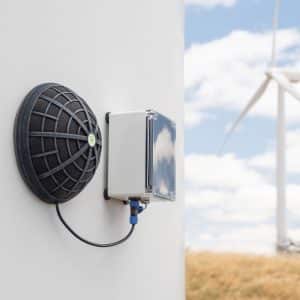Acoustic ice detection is an add-on to our on-tower sensor system for detecting rotor blade damage, which is installed directly on the tower.
Based on acoustic changes, our system detects whether there is ice accumulation on the rotor blades or not – you will be alerted when light icing has started and receive 30-minute reports and notifications of persistent icing events.
Ice on turbine blades is a significant issue in some colder climates, causing damage and potentially becoming a safety hazard. This can lead to turbines being shut down for long periods and subject to dangerous ice load, resulting in revenue and energy shortages. We have developed a less costly and more effective software upgrade to our system, that continuously monitors blades to detect icing along with any change or damage, providing additional blade icing detection time compared to traditional methods.

